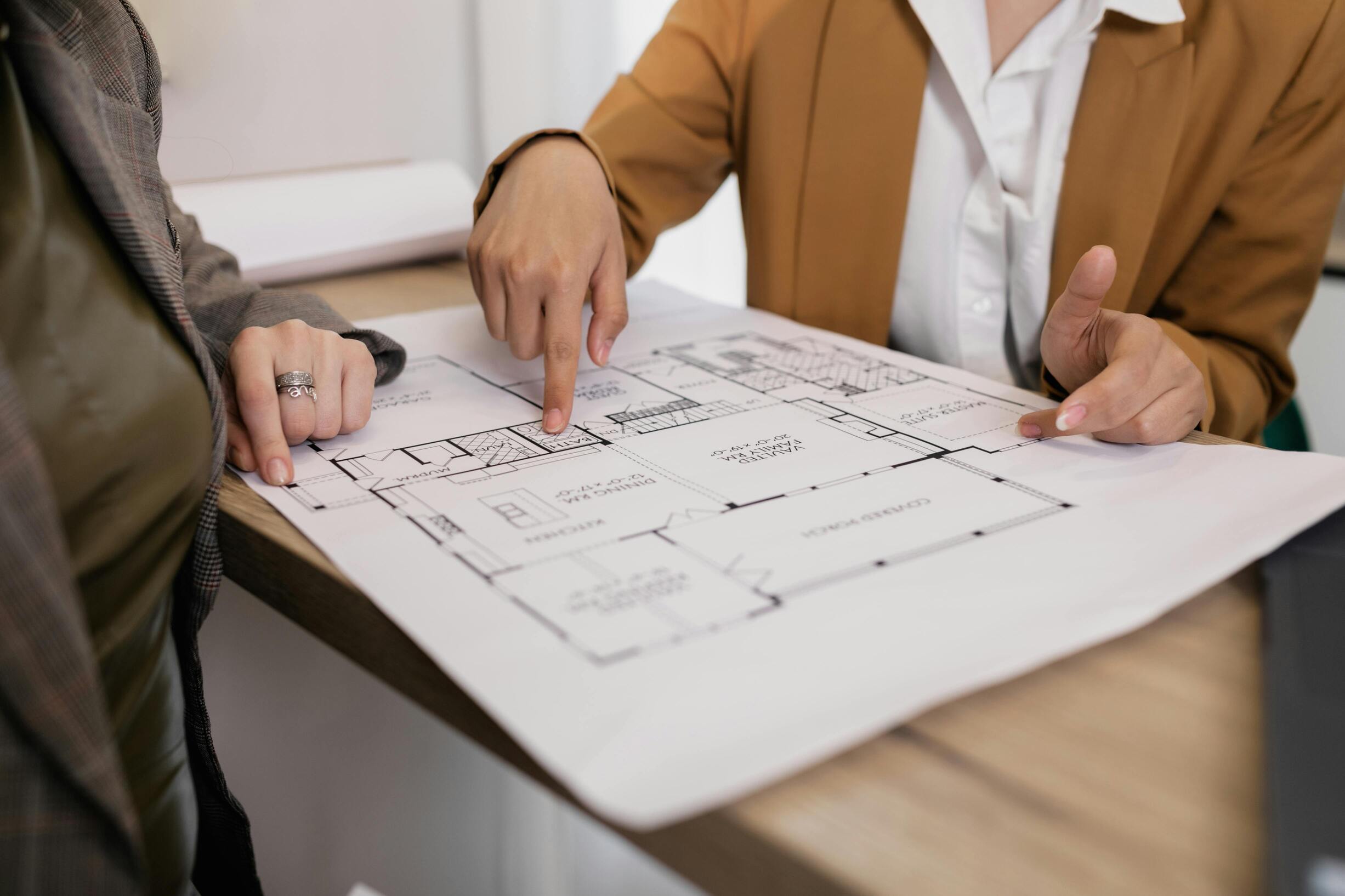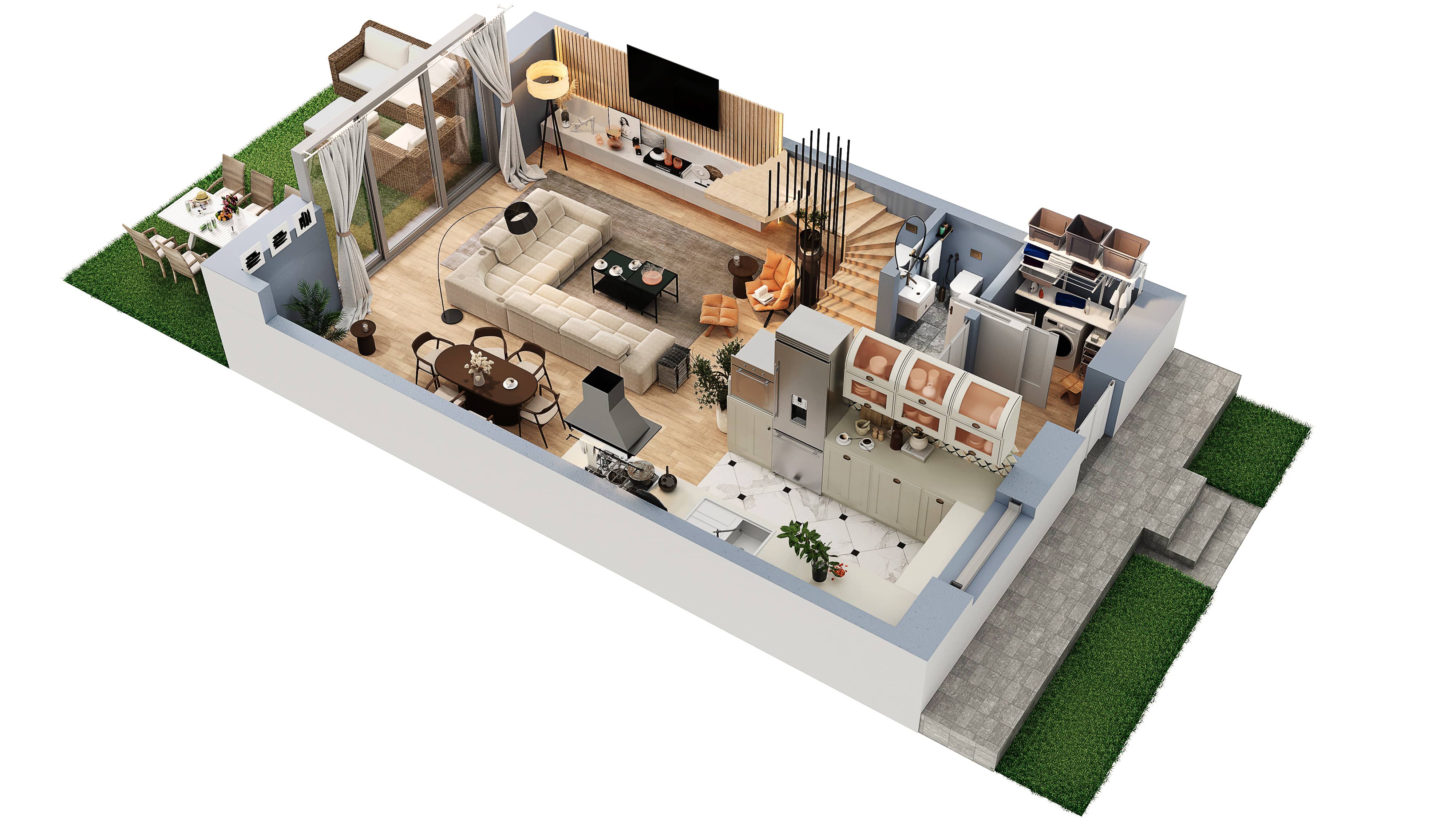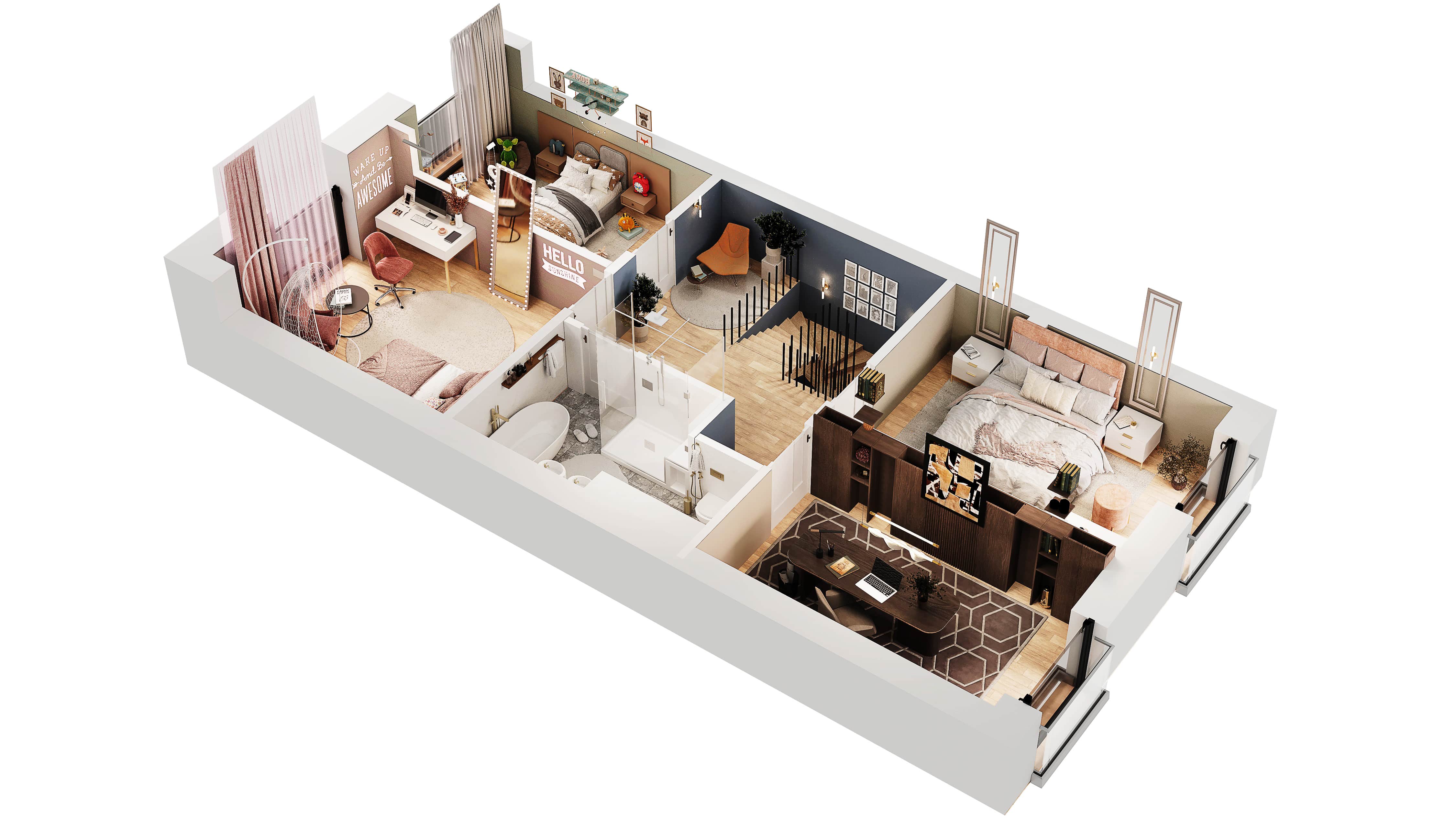
3D Floor Plan: Apartment, Commercial Unit, House - Price & Time
...
3D floor plan and 2D architectural projection are often seen as competing solutions.
Some real estate developers believe that floor plan renderings are the best tool since the Internet came along, while others argue that 2D floor plans are good enough and still effective. So which solution is better?
In the process of presenting property projects, real estate developers often face a choice: traditional 2D floor plans or modern 3D floor plan visualizations?
Each method has its advantages – 2D offers clarity and precision, while 3D brings visual appeal and emotional impact.
In this post, we’ll compare both approaches and suggest when to use the classic format and when to opt for a three-dimensional solution to help clients make decisions more easily and to make your offer stand out on the market.
What to choose for presenting a property investment – 2D or 3D floor plan?
If you want a clear, attractive presentation for clients – choose a 3D floor plan. If you need technical clarity – go with a 2D floor plan. The best results come from combining both.

2D architectural projections are often chosen for their simplicity and speed of execution. Unlike 3D floor plans, 2D floor plans do not require such complex operations as 3D modeling, texturing or adding details. In addition, since a 2D plan is a schematic drawing of a room with pictorial symbols for furniture and decor, its execution is much faster.
2D floor plans are also valued for their simplicity and clarity. They show the planning and schematic layout of furniture clearly and accurately, allowing clients to focus on the most important elements without being distracted by additional details.
2D floor plans, while simple to produce, are difficult for a real estate developer's clients to perceive. Familiarity with architectural symbols and spatial thinking skills are needed to understand them, which may require more effort on the part of the real estate developer to explain them to the client.
2D floor plans don't show the heights of the rooms, which means buyers can't see the whole picture of the interior. They have to imagine the height of the ceiling and the scale of the glazing area. In this case, the only way to establish mutual understanding is to provide real photos.
2D plans also don't give clients the excitement they expect when thinking about their new apartment. They want 3D visualizations to be as realistic as possible so they can imagine themselves already living in it. Therefore, while 2D plans are effective at informing, they are not as attractive as 3D renderings, which give a "Wow!" effect.

Creating 3D floor visualizations can be time-consuming, especially for more complex and elaborate properties.
Although 3D renderings are more expensive than 2D floor plans, many real estate agents say that their use contributes to increased sales, making it a good investment.
It's also important for real estate developers to find a reliable company, which can require lengthy research and many inquiries to potential companies.

While 2D floor plans are essential for conveying technical information, a 3D floor plan is better for marketing and property presentation purposes.
While it may be more expensive and require more time, a 3D floor plan not only shows the property, but more importantly sells it.
A 2D floor plan is a flat, technical drawing showing the room layout. A 3D floor plan is a three-dimensional visualization with furniture, colors, and a realistic perspective.
2D floor plans are cheaper and quicker to produce. 3D floor plans require more work but deliver a greater visual and sales impact.
When you need a quick technical presentation, such as for contractors or project documentation.
When presenting a property investment to clients or investors in an attractive and easy-to-understand way.
Yes – they grab attention, make the offer stand out, and increase audience engagement in advertising campaigns.
Lack of depth, color, and furniture makes it harder for clients to imagine the space in real life.
The realistic interior view helps clients imagine living in the space, which shortens the decision-making process.
It may be sufficient for technical purposes, but for sales materials, a 3D floor plan is more effective.
Yes – 2D provides precision, and 3D adds appeal. Combining both strengthens your offer’s message.
A 2D floor plan can be created in 1 day, while a 3D floor plan usually takes 2–3 days depending on complexity.
Usually yes, but the investment pays off through increased interest in the offer and faster sales.
Yes – they look great in brochures, posters, catalogs, and promotional materials.
Definitely – 3D floor plans are intuitive and don’t require any technical knowledge.
Yes – they allow a better understanding of spatial layout, room relationships, and proportions.
If you want aesthetics and emotion – go with a 3D floor plan. For technical or budget reasons – choose 2D. Ideally: use both.
Book a free consultation.
Sign up now for our free RendProletter and receive 1 email every week with a short summary of the best posts from our blog and emails with unique offers you won't find anywhere else!